This article was medically reviewed by Tu Anh Vu, DMD. Dr. Tu Anh Vu is a board certified dentist who runs her private practice, Tu's Dental, in Brooklyn, New York. Dr. Vu helps adults and kids of all ages get over their anxiety with dental phobia. Dr. Vu has conducted research related to finding the cure for Kaposi Sarcoma cancer and has presented her research at the Hinman Meeting in Memphis. She received her undergraduate degree from Bryn Mawr College and a DMD from the University of Pennsylvania School of Dental Medicine.
There are 16 references cited in this article, which can be found at the bottom of the page.
wikiHow marks an article as reader-approved once it receives enough positive feedback. In this case, 100% of readers who voted found the article helpful, earning it our reader-approved status.
This article has been viewed 1,100,795 times.
If your gums have begun receding, you may have periodontitis or gum recession, which is gum disease that can destroy the bones and tissues attached to your teeth.[1] See a dental professional as soon as you notice changes in your gums. In the meantime, you can use some at home products to stimulate your gum growth. Be aware that there is limited scientific evidence supporting these methods. Use them carefully and do not use them in place of tooth brushing, flossing, and regular dental visits.
Steps
Homemade Pastes
-
1Mix baking soda with water. Mix 3 tablespoons of baking soda and 1 teaspoon of water in a small cup. Stir the solution and continue to add water until a paste-like substance forms. It is important to mix the baking soda with water. Baking soda alone is too harsh for your teeth and gums.[2]
- You can also mix the baking soda with olive oil or coconut oil instead of water.[3]
-
2Apply the mixture to your gums. Dip one finger into the mixture and place it on your gum line. Gently massage your gums with your fingers using small circular motions. You can also apply the mixture to your gums using a soft toothbrush.
- Massage for two minutes.
- Apply the mixture two or three times a week.[4]
- Stop using the paste if you notice that your gums are becoming more irritated.
Advertisement -
3Make an herbal paste. Mix turmeric powder with water to make a paste. Use a soft toothbrush to apply the paste to your gums. If the toothbrush is too rough, you can use your fingers to massage the paste onto your gums. Leave the paste on your gums for a few minutes and then rinse your mouth.[5]
- You can also apply chopped sage leaves or apply 1/16 of a teaspoon of dried sage to your gums. Leave the sage on your gums for two to three minutes and then rinse your mouth.
- Both turmeric and sage have anti-inflammatory properties. Turmeric helps fight bacteria in addition to reducing inflammation.
Ozonated Olive Oil
-
1Purchase ozonated olive oil. Ozonated olive oil is olive oil that has undergone a process that increases its ability to fight harmful bacteria and microorganisms in your mouth. This process turns olive oil from a greenish color to a white-colored gel. You can purchase ozonated olive oil from an online retailer like Amazon.[6]
- Ozonated olive oil has been shown to heal gum wounds,[7] and improve the symptoms of gum disease.[8]
- Refrigerate your ozonated olive oil or keep it in away from sunlight at room temperature.
- Many people have had good results with this treatment, but the only way to really halt gum recession is with medical attention from a professional. Ozone therapy is known to kill anaerobic bacteria — a very successful procedure used to fight periodontitis.[9]
-
2Brush your teeth. Brush your teeth with a soft toothbrush and a non-fluoride toothpaste. After you are done brushing, floss each tooth to remove any plaque and debris.[10] The olive oil is more effective when you prep your mouth before applying.
- Be careful not to brush too hard before applying the oil.
-
3Apply the oil to your gums. You can apply the oil to your gums using your fingers or your toothbrush. Massage your gums with the oil for 10 minutes.[11] Once you have applied it, do not eat, rinse, or drink anything for 30 minutes.[12]
- You can also brush your teeth with the oil.
- Do not use ozonated olive oil if you have had a recent heart attack, are pregnant, have hyperthyroidism, are intoxicated with alcohol, or have a hemorrhage in any of your organs.[13]
- Read the instructions on the container to determine how often you should apply the oil.
Oil Pulling
-
1Put a tablespoon of oil in your mouth. Oil pulling is used to remove impurities from your mouth. Coconut oil, sunflower oil, sesame oil, or palm oil can be used. Coconut oil is the most popular, but it is solid below 75 degrees Fahrenheit (23.9 Celsius), and it can be hard to swish around a chunk of oil. Try mixing coconut oil with another one of these oils (e.g. sunflower oil, sesame oil, or palm oil) so it will be easier to swish around your mouth.[14]
-
2Swish the oil around. Swish and pull the oil between your teeth for 10 to 15 minutes. The oil will turn thin and a milky white color. The swishing motion helps activate enzymes. Do not swallow the oil because it contains bacteria.[17]
- If you are unable to do 10 to 15 minutes a day, start by doing five minutes and work your way up.
- It is best to oil pull first thing in the morning before you eat.
-
3Brush your teeth. Once you have spit out the oil, brush your teeth and rinse your mouth with water as you normally would. Oil pulling is not a substitute for regular tooth brushing and oral care. It should be used as a supplement to what you usually do.[18] [19]
- Oil pulling is as effective as commercially available mouth rinses for reducing bad breath and plaque growth and build up. Gingivitis (early gum disease) is the result of plaque buildup.[20]
- If you oil pull every day, there should be an improvement in plaque buildup in 10 days.
- Although the American Dental Association does not recommend oil pulling, it has been used for centuries to take care of teeth and gums. Even if you use this technique, see a medical professional to stop your gum recession.
Regular Gum Care
-
1Know the causes of receding gums. There are many factors that can cause your gums to recede. Your dentist can help you identify any risk factors that you may have.[21] Typical causes of receding gums include:
- Gum disease
- Using a hard-bristled toothbrush or brushing too hard
- Being born with naturally thin or weak gums
- Smoking and using tobacco
- Trauma to your gum tissue
-
2Brush teeth twice a day. Use a soft-bristled toothbrush to gently brush your teeth twice a day. Your toothbrush should be at a 45 degree angle to your gums. Brush back and forth using short strokes with no pressure on the toothbrush.[22] Then do a vertical move by simply "pulling" the gum toward your tooth surface with the brush. A good gum massage, along with a brushing technique that stimulates the gum growth towards the chewing surface, is the secret of preventing recession.
- Be sure to brush all the different surfaces of your teeth.
- Replace your toothbrush every three to four months or even earlier if bristles start spreading and losing their color.
- Brush your tongue when you are finished to remove bacteria.
-
3Floss daily.[23] Flossing daily helps remove plaque that cannot be removed by brushing alone. Take 18 inches of floss and wind it around your middle fingers. Make a “C” shape when rubbing the floss between your teeth and gum line. Be gentle and never snap the floss into your gums.[24]
- You can use dental floss, a dental pick, or a pre-threaded flosser. Talk to your dentist about which tool is best for you.
-
4
-
5See a specialist. If your regular dentist feels that you need more intensive care, you should see a specialist. A specialist can perform specialized treatments and surgical procedures to increase gum growth. These treatments are expensive and invasive.
- Possible treatments to fix your gums include scaling and root planning or a gum graft. Your dentist will decide what is best for you.
Expert Q&A
Did you know you can get premium answers for this article?
Unlock premium answers by supporting wikiHow
-
QuestionWhat does it mean if my gums bleed when I floss?
 Tu Anh Vu, DMDDr. Tu Anh Vu is a board certified dentist who runs her private practice, Tu's Dental, in Brooklyn, New York. Dr. Vu helps adults and kids of all ages get over their anxiety with dental phobia. Dr. Vu has conducted research related to finding the cure for Kaposi Sarcoma cancer and has presented her research at the Hinman Meeting in Memphis. She received her undergraduate degree from Bryn Mawr College and a DMD from the University of Pennsylvania School of Dental Medicine.
Tu Anh Vu, DMDDr. Tu Anh Vu is a board certified dentist who runs her private practice, Tu's Dental, in Brooklyn, New York. Dr. Vu helps adults and kids of all ages get over their anxiety with dental phobia. Dr. Vu has conducted research related to finding the cure for Kaposi Sarcoma cancer and has presented her research at the Hinman Meeting in Memphis. She received her undergraduate degree from Bryn Mawr College and a DMD from the University of Pennsylvania School of Dental Medicine.
Board Certified Dentist
-
QuestionWhy are my gums receding?
 Tu Anh Vu, DMDDr. Tu Anh Vu is a board certified dentist who runs her private practice, Tu's Dental, in Brooklyn, New York. Dr. Vu helps adults and kids of all ages get over their anxiety with dental phobia. Dr. Vu has conducted research related to finding the cure for Kaposi Sarcoma cancer and has presented her research at the Hinman Meeting in Memphis. She received her undergraduate degree from Bryn Mawr College and a DMD from the University of Pennsylvania School of Dental Medicine.
Tu Anh Vu, DMDDr. Tu Anh Vu is a board certified dentist who runs her private practice, Tu's Dental, in Brooklyn, New York. Dr. Vu helps adults and kids of all ages get over their anxiety with dental phobia. Dr. Vu has conducted research related to finding the cure for Kaposi Sarcoma cancer and has presented her research at the Hinman Meeting in Memphis. She received her undergraduate degree from Bryn Mawr College and a DMD from the University of Pennsylvania School of Dental Medicine.
Board Certified Dentist
-
QuestionIs there a way to build bone back up into the gums once it starts receding?
 Cristian Macau, DDSDr. Macau is an oral surgeon, periodontist, and aesthetician at Favero Dental Clinic in London. He received his DDS from Carol Davila University of Medicine in 2015.
Cristian Macau, DDSDr. Macau is an oral surgeon, periodontist, and aesthetician at Favero Dental Clinic in London. He received his DDS from Carol Davila University of Medicine in 2015.
Doctor of Dental Surgery Once the bone started to recede the process can only be stopped or reversed using surgical methods performed by a dental surgeon or periodontist. Root scaling and planing can stop bone resorption, but it requires a constant check every 6 months and a proper oral hygiene. In some cases, bone grafting is used to build bone back, especially in severe periodontitis or before/during implant placement. Antibiotics such as tetracycline can also be used to stop bone resorption but this depends whether the cause is hormonal, bacterial or a combination of the two.
Once the bone started to recede the process can only be stopped or reversed using surgical methods performed by a dental surgeon or periodontist. Root scaling and planing can stop bone resorption, but it requires a constant check every 6 months and a proper oral hygiene. In some cases, bone grafting is used to build bone back, especially in severe periodontitis or before/during implant placement. Antibiotics such as tetracycline can also be used to stop bone resorption but this depends whether the cause is hormonal, bacterial or a combination of the two.
References
- ↑ Tu Anh Vu, DMD. Board Certified Dentist. Expert Interview. 10 April 2020.
- ↑ http://www.rdhmag.com/articles/print/volume-31/issue-9/features/guiding-your-periodontal-patients-to-a-positive-nonsurgical-treatment.html
- ↑ http://www.globalhealingcenter.com/natural-health/how-to-get-rid-of-gingivitis-natural-remedies/
- ↑ http://www.globalhealingcenter.com/natural-health/how-to-get-rid-of-gingivitis-natural-remedies/
- ↑ http://www.globalhealingcenter.com/natural-health/how-to-get-rid-of-gingivitis-natural-remedies/
- ↑ http://www.sciencedirect.com/science/article/pii/S1687857414000183
- ↑ http://www.karger.com/Article/Pdf/336889
- ↑ http://www.sciencedirect.com/science/article/pii/S1687857414000183
- ↑ http://www.ncbi.nlm.nih.gov/pmc/articles/PMC3722714/
- ↑ Tu Anh Vu, DMD. Board Certified Dentist. Expert Interview. 10 April 2020.
- ↑ http://www.globalhealingcenter.com/natural-health/how-to-get-rid-of-gingivitis-natural-remedies/?icn_ghc=ozt2_3_051515_ooopo_hgrgn&ici_ghc=oznha
- ↑ http://www.sciencedirect.com/science/article/pii/S1687857414000183
- ↑ http://www.ncbi.nlm.nih.gov/pmc/articles/PMC3662033/
- ↑ http://www.livescience.com/50896-oil-pulling-facts.html
- ↑ http://www.ijdr.in/article.asp?issn=0970-9290;year=2009;volume=20;issue=1;spage=47;epage=51;aulast=Asokan
- ↑ http://www.ijdr.in/article.asp?issn=0970-9290;year=2008;volume=19;issue=2;spage=169;epage=169;aulast=Asokan
- ↑ http://www.ijdr.in/article.asp?issn=0970-9290;year=2008;volume=19;issue=2;spage=169;epage=169;aulast=Asokan
- ↑ http://www.livescience.com/50896-oil-pulling-facts.html
- ↑ http://www.ijdr.in/article.asp?issn=0970-9290;year=2008;volume=19;issue=2;spage=169;epage=169;aulast=Asokan
- ↑ http://www.mouthhealthy.org/en/az-topics/g/gingivitis
- ↑ Tu Anh Vu, DMD. Board Certified Dentist. Expert Interview. 10 April 2020.
- ↑ http://www.mouthhealthy.org/en/az-topics/b/brushing-your-teeth
- ↑ Tu Anh Vu, DMD. Board Certified Dentist. Expert Interview. 10 April 2020.
- ↑ http://www.mouthhealthy.org/en/az-topics/f/Flossing%20Steps
- ↑ Tu Anh Vu, DMD. Board Certified Dentist. Expert Interview. 10 April 2020.
- ↑ http://www.ada.org/en/press-room/news-releases/2013-archive/june/american-dental-association-statement-on-regular-dental-visits
About This Article
To stimulate gum growth, try mixing 3 tablespoons of baking soda and 1 teaspoon of water and then gently massaging the paste into your teeth for 2 minutes, repeating 2-3 times a week. You can also try mixing turmeric powder and water and then applying the paste to your gums with a toothbrush, which can help fight bacteria and inflammation. Also, try oil pulling to remove impurities in your mouth that can affect your gums. Just swish coconut oil around in your mouth for 10-15 minutes before spitting it out, repeating every day. To learn how to use ozonated olive oil to stimulate gum growth, scroll down!

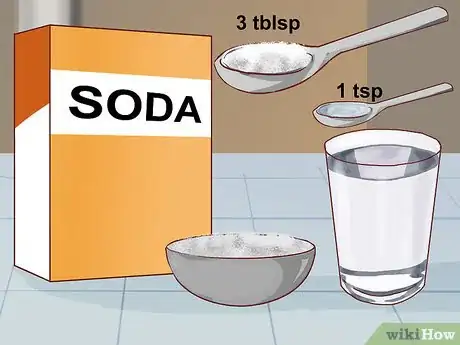
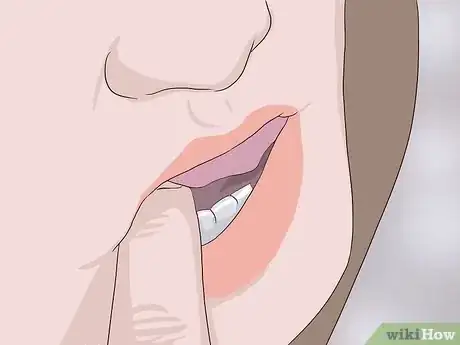
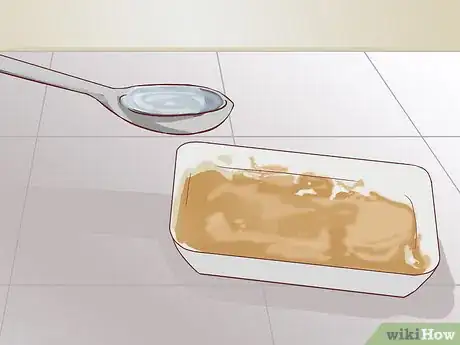
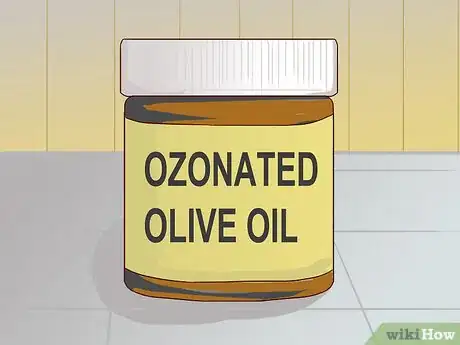
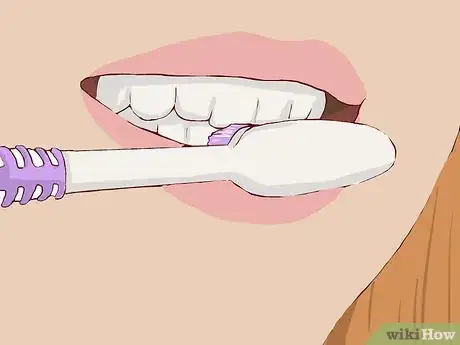
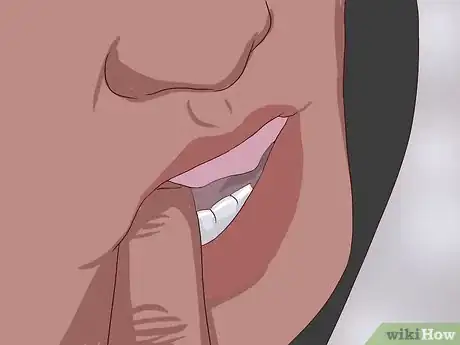
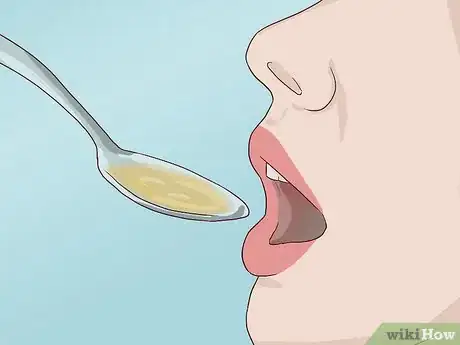

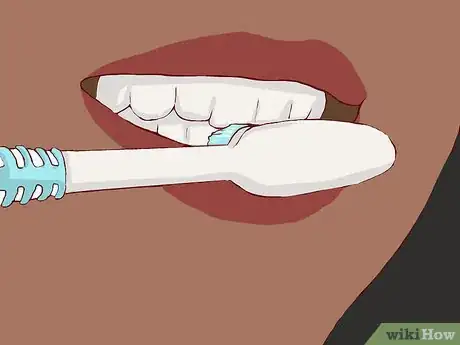
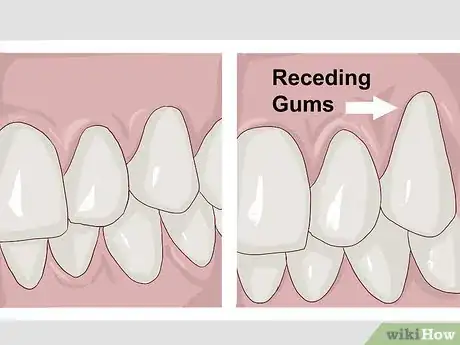
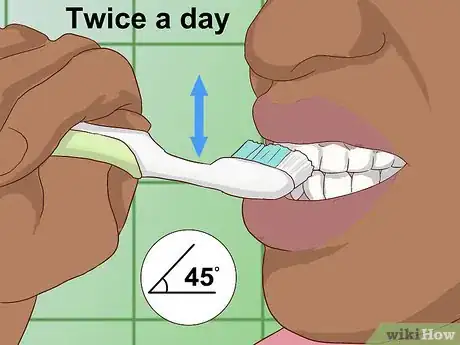
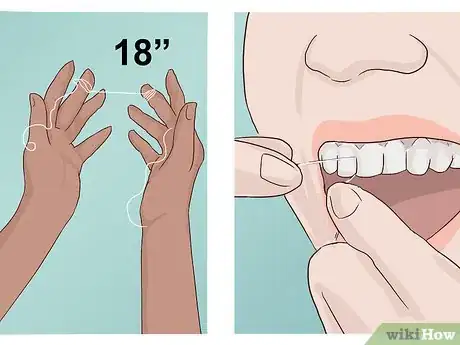
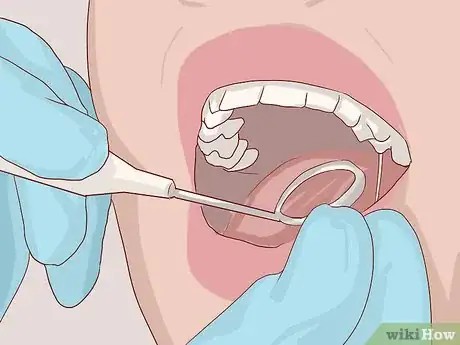

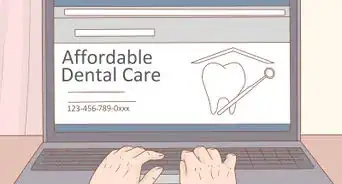





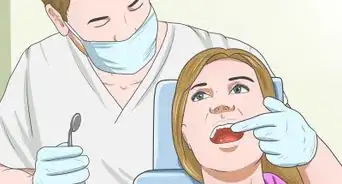
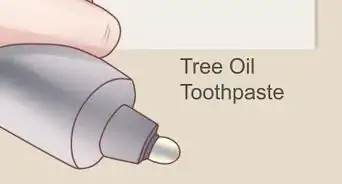


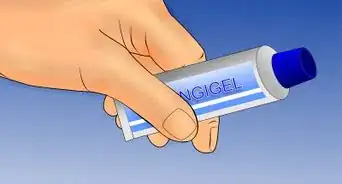

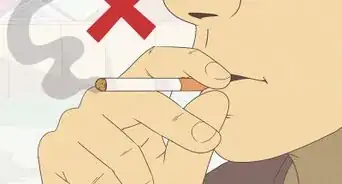
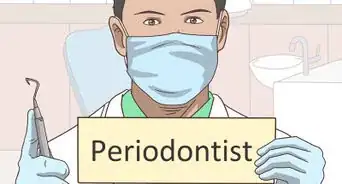

















































Medical Disclaimer
The content of this article is not intended to be a substitute for professional medical advice, examination, diagnosis, or treatment. You should always contact your doctor or other qualified healthcare professional before starting, changing, or stopping any kind of health treatment.
Read More...